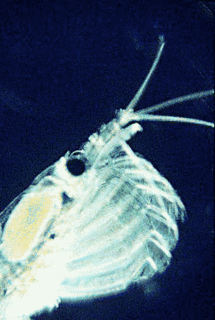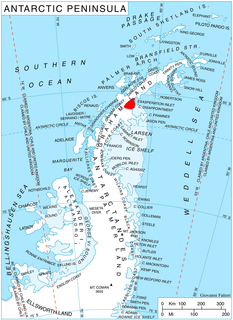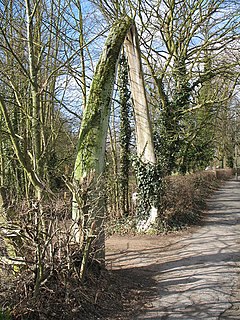
A backscratcher is a tool used for relieving an itch in an area that cannot easily be reached just by one's own hands, typically the back.

A corset is a garment worn to hold and train the torso into a desired shape, traditionally a smaller waist or larger bottom, for aesthetic or medical purposes, or support the breasts. Both men and women are known to wear corsets, though this item was for many years an integral part of women's wardrobes.

Rorquals (Balaenopteridae) are the largest group of baleen whales, a family with nine extant species in two genera. They include what is believed to be the largest animal that has ever lived, the blue whale, which can reach 180 tonnes, and the fin whale, which reaches 120 tonnes ; even the smallest of the group, the northern minke whale, reaches 9 tonnes.

Baleen whales, also known as whalebone whales, form a parvorder of the infraorder Cetacea. They are a widely distributed and diverse parvorder of carnivorous marine mammals. Mysticeti comprise the families Balaenidae, Balaenopteridae (rorquals), Cetotheriidae, and Eschrichtiidae. There are currently 15 species of baleen whales. While cetaceans were historically thought to have descended from mesonychids,, molecular evidence supports them as a clade of even-toed ungulates (Artiodactyla). Baleen whales split from toothed whales (Odontoceti) around 34 million years ago.

Baleen is a filter-feeding system inside the mouths of baleen whales. The baleen system works by a whale opening its mouth underwater and taking in water. The whale then pushes the water out, and animals such as krill are filtered by the baleen and remain as a food source for the whale. Baleen is similar to bristles and consists of keratin, the same substance found in human fingernails and hair. Baleen is a skin derivative. Some whales, such as the bowhead whale, have longer baleen than others. Other whales, such as the gray whale, only use one side of their baleen. These baleen bristles are arranged in plates across the upper jaw of whales.

Filter feeders are a sub-group of suspension feeding animals that feed by straining suspended matter and food particles from water, typically by passing the water over a specialized filtering structure. Some animals that use this method of feeding are clams, krill, sponges, baleen whales, and many fish. Some birds, such as flamingos and certain species of duck, are also filter feeders. Filter feeders can play an important role in clarifying water, and are therefore considered ecosystem engineers. They are also important in bioaccumulation and, as a result, as indicator organisms.
In corsetry, a bone is one of the rigid parts of a corset that forms its frame and gives it rigidity. The purpose of the boning in a corset varies slightly from era to era. Generally, the cinching/shaping properties of corsetry puts strain onto the fabric from which the corset is made. The boning supports the desired shape and prevents wrinkling of the corset fabric. Bones, and the substances used for the purpose, are generically called "boning"; however, the name likely arises from the use of whalebone in early corsets.

The corset has been an important article of clothing for several centuries in Europe, evolving as fashion trends have changed. Women, as well as some men, have used it to change the appearance of their bodies.

Janjucetus is an extinct genus of cetacean, and a basal baleen whale (Mysticeti), from the Late Oligocene around 25 million years ago (mya) off southeast Australia, containing one species J. hunderi. Unlike modern mysticetes, it possessed large teeth for gripping and shredding prey, and lacked baleen, and so was likely to have been a predator that captured large single prey animals rather than filter feeding. However, its teeth may have interlocked, much like those of the modern-day filter-feeding crabeater seal, which would have allowed some filter-feeding behavior. Its hunting behaviour was probably similar to the modern-day leopard seal, probably eating large fish. Like baleen whales, Janjucetus could not echolocate; however, it did have unusually large eyes, and so probably had an acute sense of vision. The only specimen was found on the Jan Juc beach, where the remains of the extinct whales Mammalodon, Prosqualodon and Waipatia have also been discovered.
Under the law of the United Kingdom, whales and sturgeons are royal fish, and when taken become the personal property of the monarch of the United Kingdom as part of his or her royal prerogative.
The Alaska Native Arts Foundation was a non-profit organization formed to support the Alaska Native art community. Its mission was focused on economic development to create fairly-priced markets for Alaska Native art as well as to provide general awareness and public education of Alaska's indigenous cultures, and as a result offered programs to support Alaskan Native artists. Funded by a combination of government grants and private funding in the form of donations from Alaskan Native corporations, the organization distributed grant money through project support programs to provide in-residence art programs, educational programs for rural schools, funding for museum demonstrations, art workshops, and exhibitions and documentation of native artists' work.

Alaska Native cultures are rich and diverse, and their art forms are representations of their history, skills, tradition, adaptation, and nearly twenty thousand years of continuous life in some of the most remote places on earth. These art forms are largely unseen and unknown outside the state of Alaska, due to distance from the art markets of the world.
Neolepetopsidae is a family of small deep sea sea snails or true limpets, marine gastropod mollusks in the clade Patellogastropoda.

Mount Baleen is a prominent peak of 910 m and of pyramidal shape when viewed from Larsen Ice Shelf, standing in Padesh Ridge between Rachel and Starbuck Glaciers in Aristotle Mountains on the east coast of Graham Land. The naming by United Kingdom Antarctic Place-Names Committee (UK-APC) is one in a group in this vicinity that reflects a whaling theme. Baleen whales are distinguished by the presence of a sieve of horny baleen (whalebone) plates suspended from the upper jaw, and by the absence of teeth.

Cetotheriidae is a family of baleen whales. The family is known to have existed from the Late Oligocene to the Early Pleistocene before going extinct. Although some phylogenetic studies conducted by Fordyce & Marx 2013 recovered the living pygmy right whale as a member of Cetotheriidae, making the pygmy right whale the only living cetotheriid, other authors either dispute this placement or recover Neobalaenidae as a sister group to Cetotheriidae.

Parietobalaena is an extinct genus of baleen whale, belonging to the family Pelocetidae. Fossils are found in Miocene-aged marine strata in North America, Europe, Australia and Japan.

Whalebone was a British Thoroughbred racehorse that won the 1810 Epsom Derby and was a successful sire of racehorses and broodmares in the 1820s. Whalebone and his full-brother Whisker were produced by the prolific and important broodmare Penelope, and they contributed to the perpetuation of the genetic line (tail-male) of their sire Waxy and grandsire Eclipse into the 20th century. Whalebone raced until he was six years old and was retired to stud at Petworth in 1815. Whalebone sired the Derby winners Lap-dog, Spaniel and may have been the sire of Moses. Other notable sons are Sir Hercules and Camel, the sire of Touchstone. Whalebone died in 1831 at the age of 24 of hemorrhage after covering a mare.

Whalebone Junction is an area within Nags Head, North Carolina where three major highways converge. The junction marks the eastern terminus of both U.S. 64 and U.S. Route 158, while NC 12 traverses the junction from north to south. The junction is a major landmark on the Outer Banks, as U.S. 64 and U.S. 158 provide the only highway links to the mainland, while NC 12 is the main road linking all of the Outer Banks. North of Whalebone Junction lies the main commercial district of Nags Head as well as the communities of Kill Devil Hills and Kitty Hawk. South of Whalebone Junction begins the Cape Hatteras National Seashore and the Pea Island National Wildlife Refuge. Whalebone Junction Information Station, immediately south of the junction itself, serves as the visitor center to the Cape Hatteras National Seashore and provides information on the National Park and local attractions.

Whalebones Park is a 14-acre area of fields and woods in Chipping Barnet, London Borough of Barnet, England, between Barnet Hospital and Wood Street.














